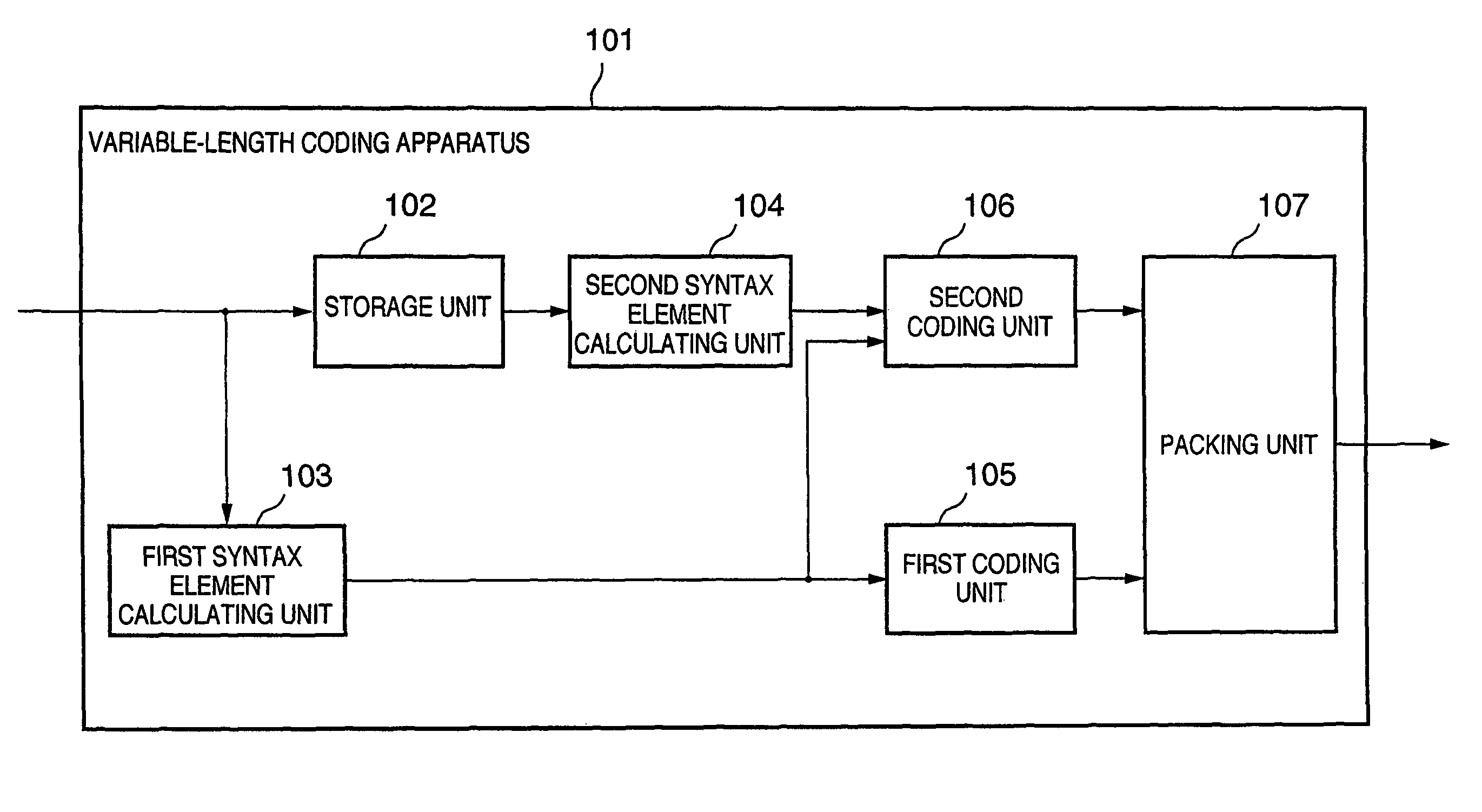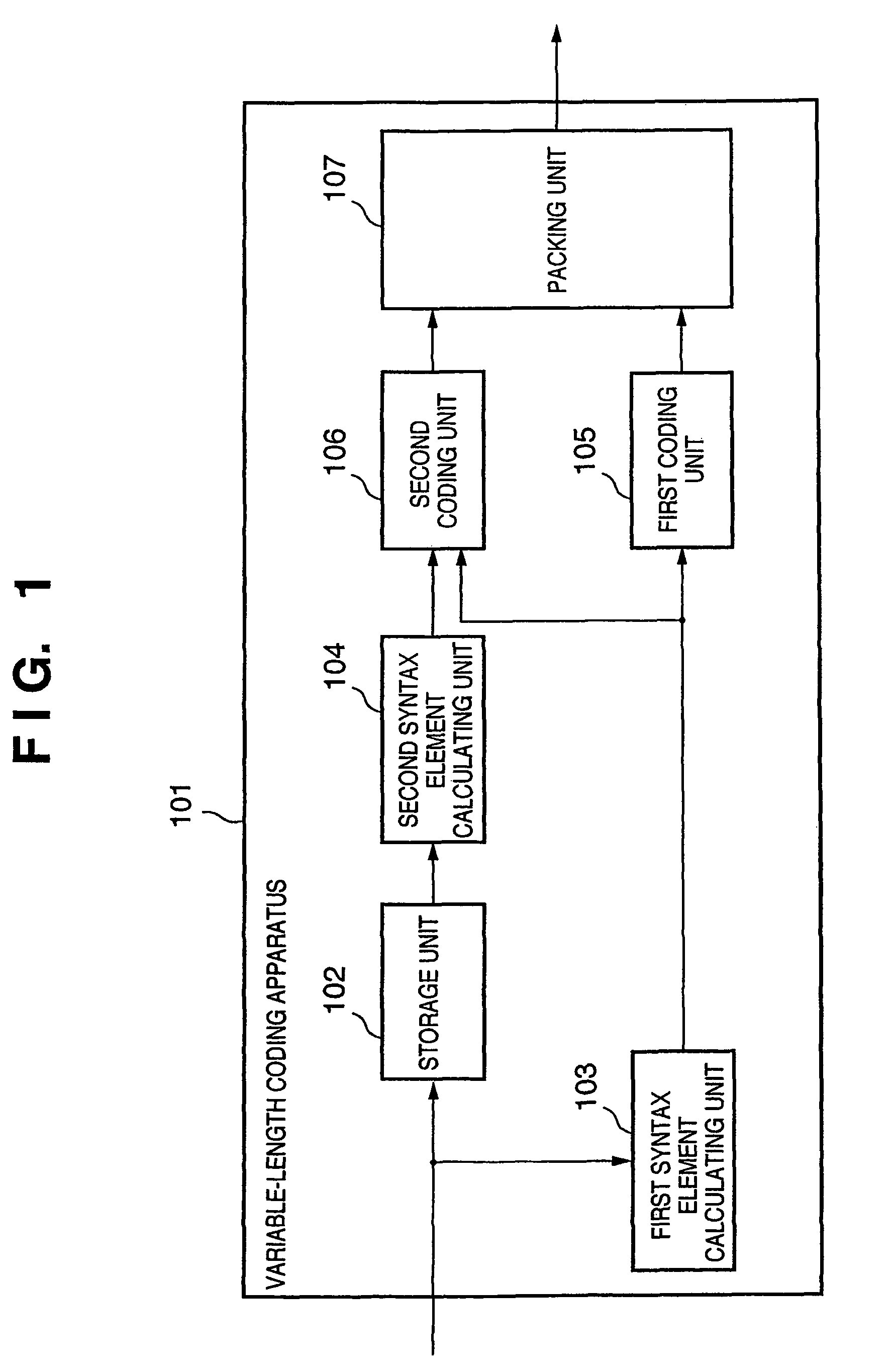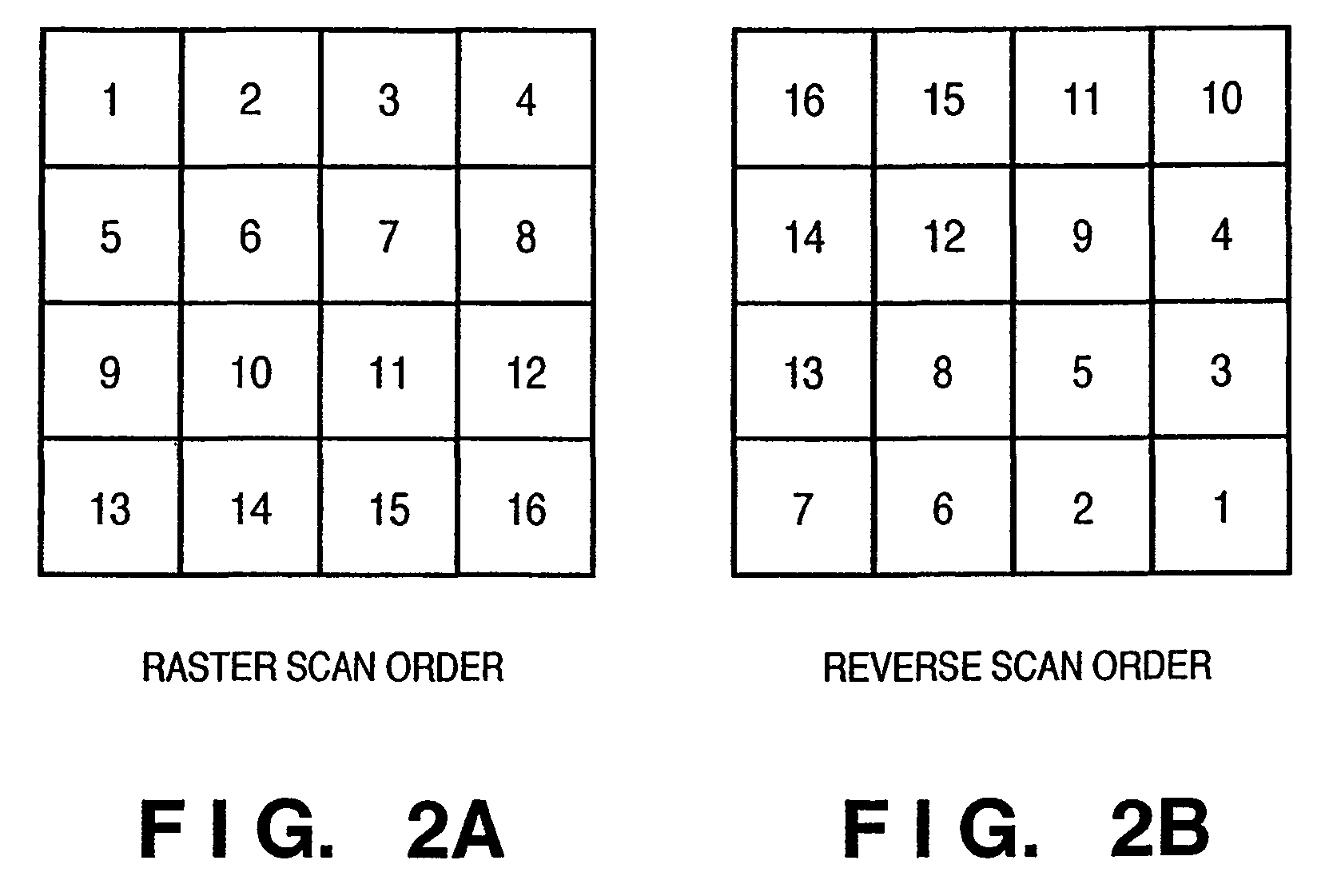Context-adaptive variable length coder with simultaneous storage of incoming data and generation of syntax elements
a variable length coder and data storage technology, applied in the field of variable length coding apparatus for compressing image signals, can solve the problems of time-consuming and long processing time of variable length coding processes, and achieve the effect of increasing processing speed
- Summary
- Abstract
- Description
- Claims
- Application Information
AI Technical Summary
Benefits of technology
Problems solved by technology
Method used
Image
Examples
first embodiment
[0044]FIG. 1 is a view showing the arrangement of the first embodiment of the present invention.
[0045]Referring to FIG. 1, a variable-length coding apparatus 101 according to the first embodiment includes a storage unit 102, first syntax element calculating unit 103, second syntax element calculating unit 104, first coding unit 105, second coding unit 106, and packing unit 107. The packing unit 107 packs variable-length coded data.
[0046]Image data of 4×4 rectangular blocks is input in a raster scan order shown in FIG. 2A to the variable-length coding apparatus 101.
[0047]The storage unit 102 is a RAM which temporarily stores the image data. Note that read or write to this RAM requires one cycle.
[0048]The first syntax element calculating unit 103 reads the image data in a block, calculates TotalCoeff, TrailingOnes, and TotalZeros in the block, and internally holds the calculated syntax elements.
[0049]The second syntax element calculating unit 104 reads out the image data held in the s...
second embodiment
[0098]The second embodiment of the present invention will be described below.
[0099]The second embodiment differs from the first embodiment in the following respect. In the first embodiment, the first syntax element calculating unit calculates the values of the first syntax elements directly from image data input to the storage unit. In the second embodiment, however, the value of additional information is calculated from image data, and a first syntax element calculating unit calculates the values of first syntax elements by using this additional information and data read out from a storage unit.
[0100]FIG. 11 is a view showing the arrangement of the second embodiment of the present invention. Referring to FIG. 11, a variable-length coding apparatus 1101 according to the present invention includes a storage unit 1102, first syntax element calculating unit 1103, second syntax element calculating unit 1104, first coding unit 1105, second coding unit 1106, and packing unit 1107. The pac...
PUM
 Login to View More
Login to View More Abstract
Description
Claims
Application Information
 Login to View More
Login to View More - R&D
- Intellectual Property
- Life Sciences
- Materials
- Tech Scout
- Unparalleled Data Quality
- Higher Quality Content
- 60% Fewer Hallucinations
Browse by: Latest US Patents, China's latest patents, Technical Efficacy Thesaurus, Application Domain, Technology Topic, Popular Technical Reports.
© 2025 PatSnap. All rights reserved.Legal|Privacy policy|Modern Slavery Act Transparency Statement|Sitemap|About US| Contact US: help@patsnap.com



